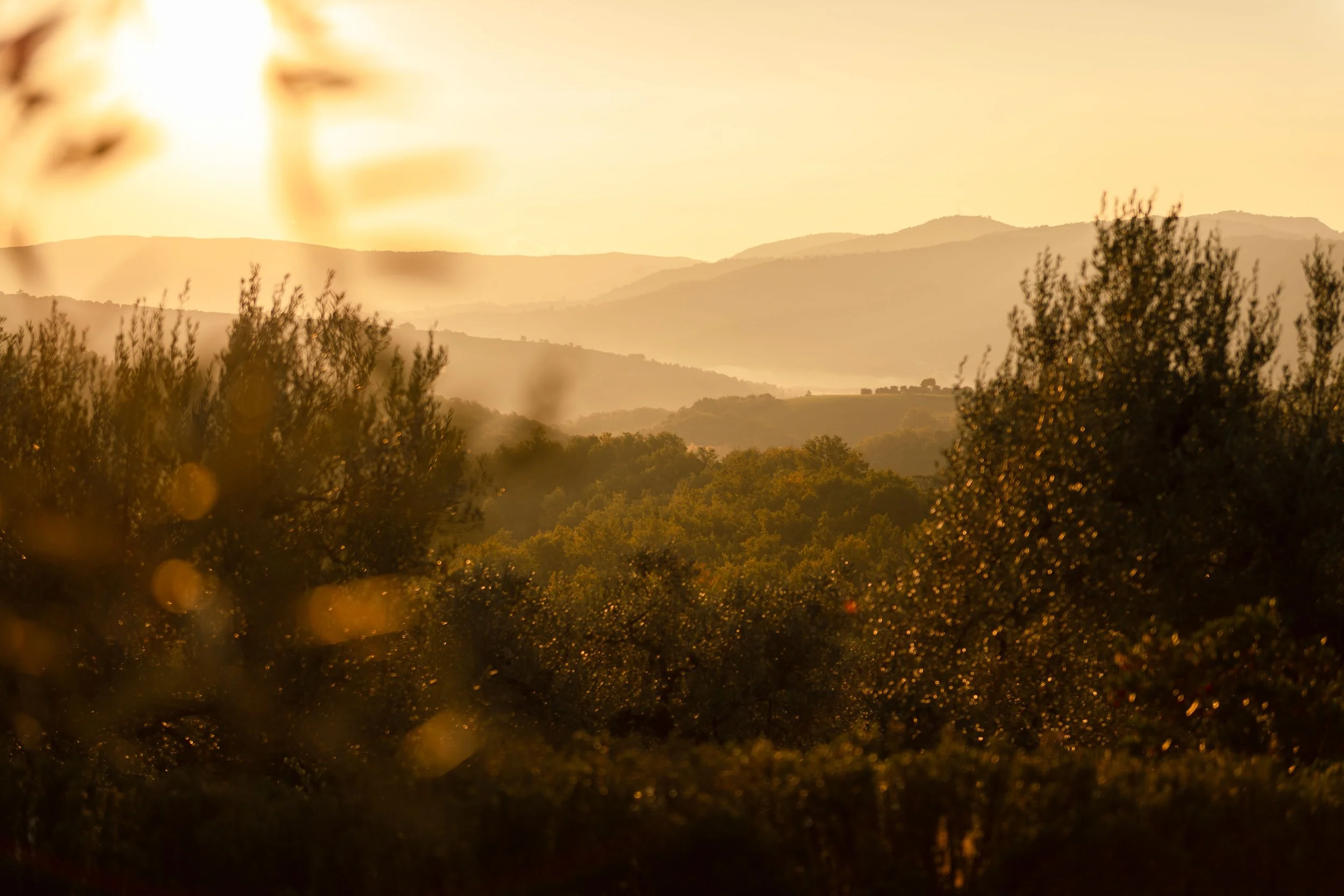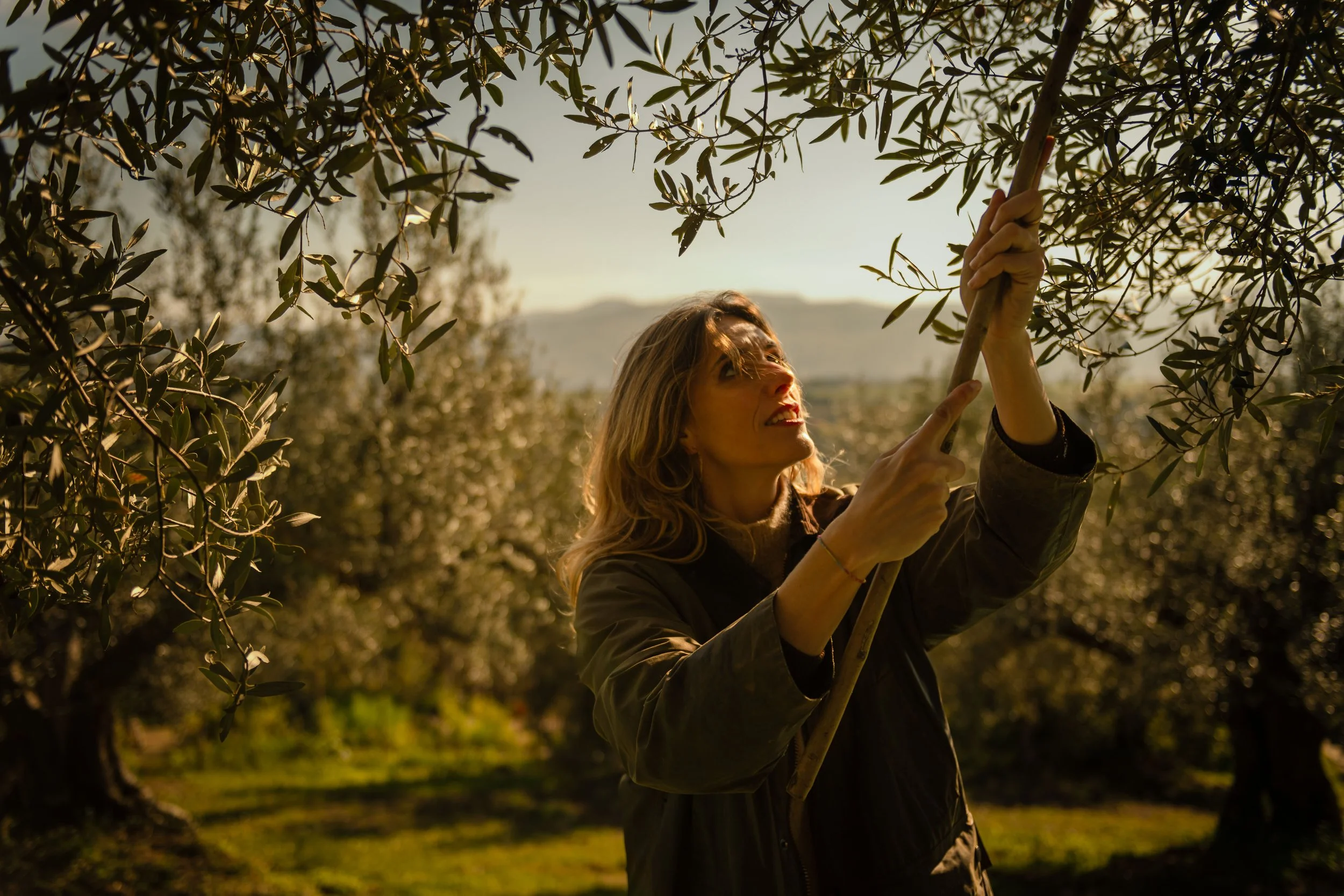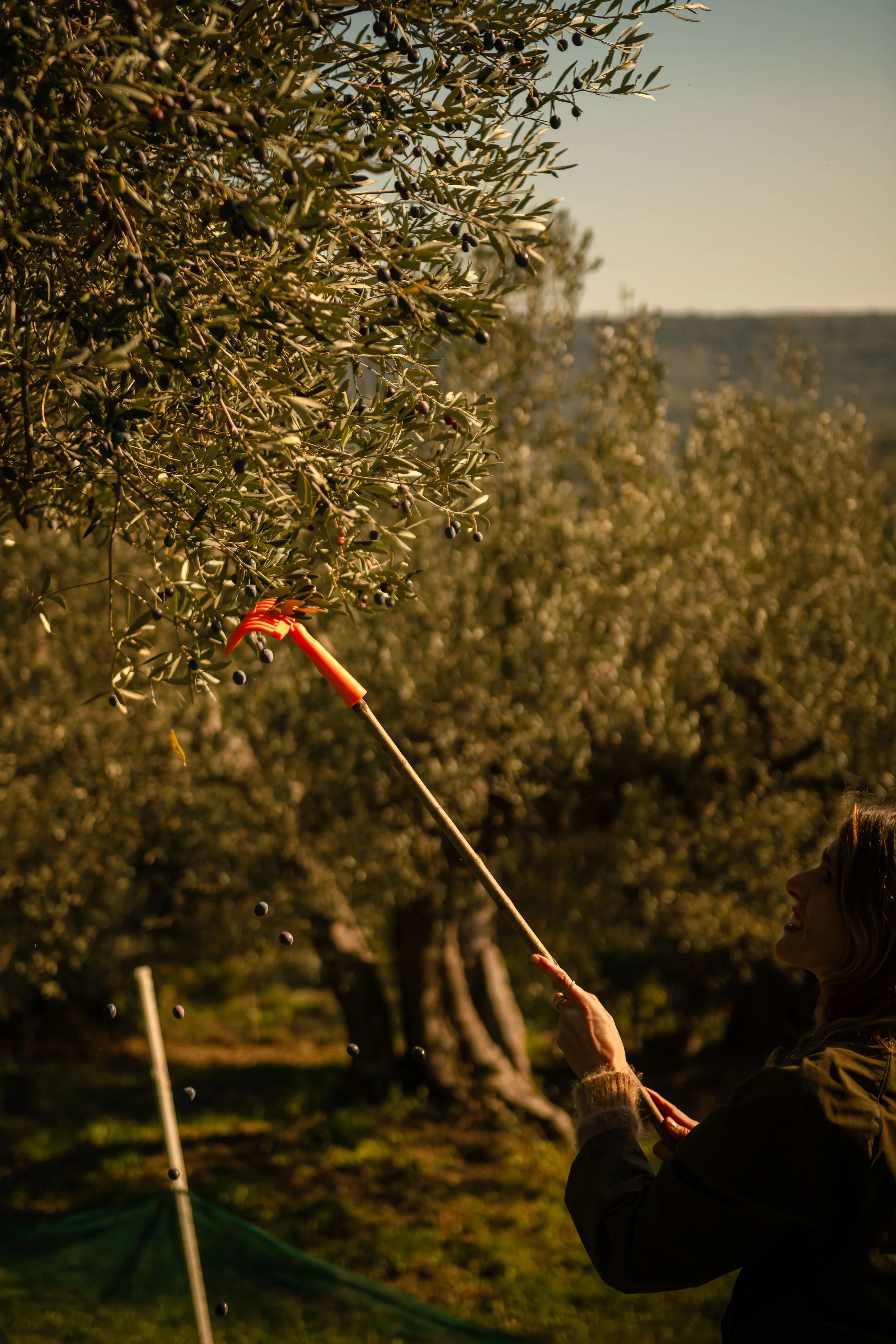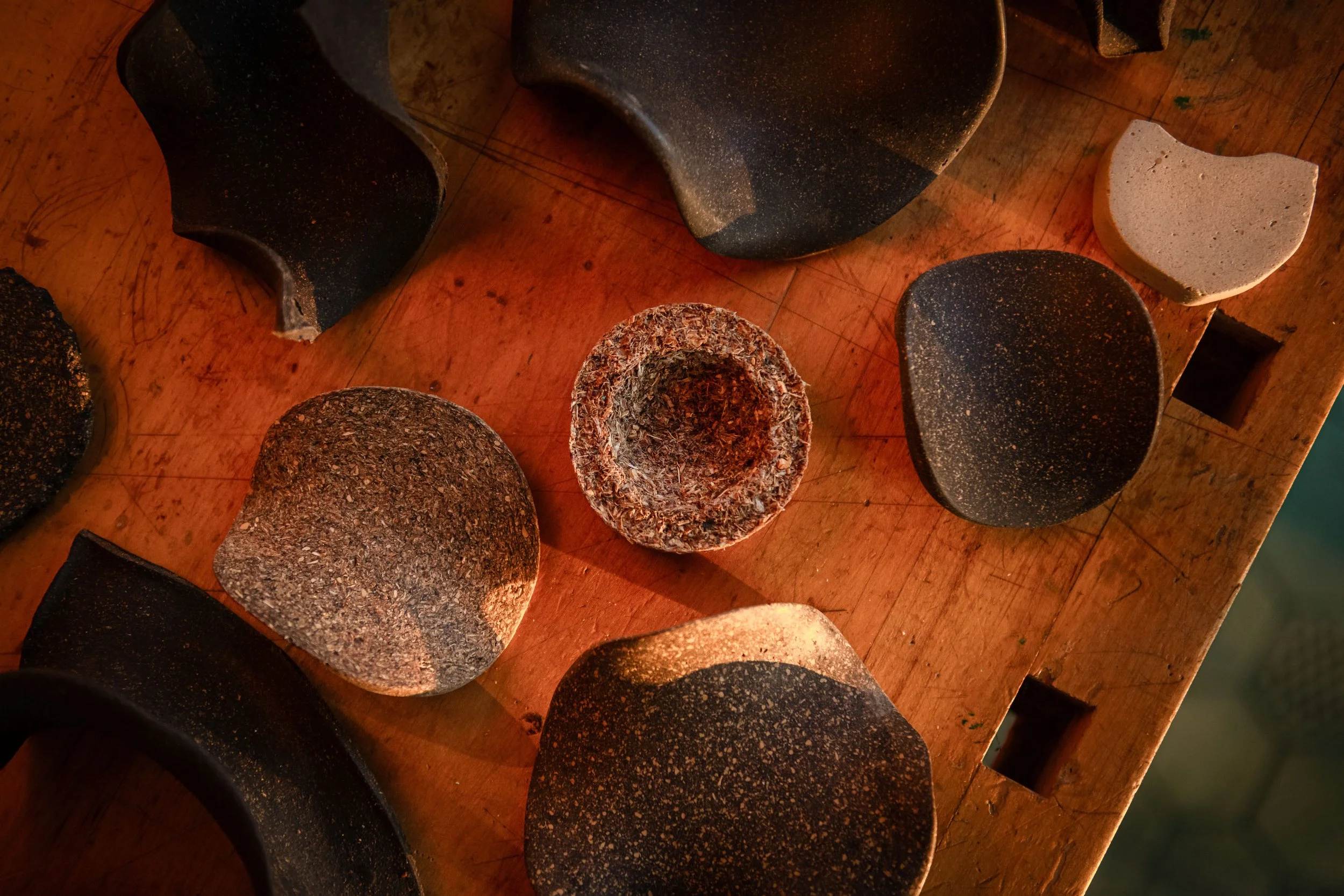The Artist’s Take On Olive Oil Waste
Anna Perugini transforms olive pomace into beautiful, regenerative creations rooted in local tradition
Words by Anna Perugini. Images by Alessandro Zaccaro
At Looms, one of our greatest areas of interest has long been in regenerative placemaking. This has taken us on many adventures around the world, speaking to designers, strategists, scientists, business leaders and communities at the intersection of nature, culture and industry. It’s a complex area that goes far beyond sustainability, with the aim of building more resilient, thriving, inclusive and self-sustaining systems that benefit both people and the environment.
Often using temporary activations to test out ideas before instating permanent solutions, regenerative placemaking combines creative appeal with true impact, bringing together various disciplines – and usually starting out on a small scale. Recently, we supported a unique design residency with these exact intentions: exploring the latest innovations in one of Italy’s most ancient processes of olive oil production.
In the heart of Umbria, Rastrello is a place quite unlike any other we’ve come across. A hotel set inside the renovated remains of a 500-year-old palazzo, surrounded by a working farm of olive groves, it’s loved and celebrated by the local community. Here, they prioritise centuries-old techniques, caring for the olive trees as naturally as possible: including hand-raking while harvesting, using minimal irrigation, and not tilling the soil. It’s a set up that resonated with local designer and researcher Anna Perugini, who joined us in this specific creative exploration to transform the waste material born of the olive oil production, olive pomace; challenging perceptions and championing hyper-locality along the way.
Drawing on her background in industrial design, Anna looks for both the functional and the aesthetic in her work, experimenting with materials, matter and making techniques, examining their cultural significance and their connections within ecosystems.
Taking this approach to olive pomace, abundantly available and ripe for creative experimentation, Anna landed on a special way of pressing (processing?) the material into striking sculptural pieces.
Here Anna shares more about how this experience ignited her curiosity, the inspiration she found in the dynamics of the local landscape and community, and why she’s driven to create beauty from waste.
As a designer you've been working with waste and other regenerative resources for a while now, what kickstarted this approach and how has your understanding of what's possible or needed changed over the years?
Working with waste came quite naturally, simply by observing the environment around me. Residues, offcuts, and by-products from agricultural and industrial processes are everywhere. In a context marked by scarcity – of water, energy, and raw materials – waste is one thing we seem to have in abundance. More often than not, these are unwanted materials, which makes them relatively accessible. I like the idea of transforming something overlooked into something special.
However, over time, I’ve become more critical of how waste is framed in design contexts. The association between waste and ecological care is often misleading. A material is only truly regenerative if the system that produced it is socially and ecologically just. The story of the material – who made it, under what conditions, what was extracted or exploited in the process – matters deeply
What are the challenges when it comes to your creative process; did you find yourself creating new practices to reflect the unknowns of this particular material?
Working with olive pomace — a living, organic material, the waste by-product of olive oil —brings unique challenges that don’t fit into typical design processes. The material is prone to mould, it deforms significantly during drying, which takes a very long time. Because there were no established methods for working with it, the process has been, and still is challenging. I’m developing my own way of working through a lot of trial and error.
One of the biggest challenges has been learning to accept the material’s imperfections. Coming from an industrial design background, I’m used to precision, repetition and control. But with this material, those approaches don’t apply. Instead, I’m learning to enter into a dialogue with the material, allowing its natural behaviour to guide my design and production decisions.
For example, some early pieces I made from the olive pomace dried outdoors, on a windy day, developing soft lines, undulating surfaces, and irregular shapes. Rather than correcting these ‘flaws’, I chose to embrace them, which led to a way of making and an aesthetic language rooted in the materiality itself.
Through the residency, we discussed waste material in the context of the social and cultural landscape of the area; how do these factors impact circular practices and opportunities?
Working in a familiar context allowed me to trace the origin of the material more directly and to engage with the people involved in its production. I sourced the olive pomace from small, family-run mills in the Marche region, where harvesting methods are still rooted in traditional practices that are generally more respectful of the environment.
This kind of setting helps to reduce the risk of exploitative labour conditions, which remain a serious issue in parts of Europe’s agri-food sector – particularly in large-scale operations, where migrant workers often form the backbone of production but are denied basic rights. By working at a smaller scale and in close dialogue with the community, I was able to better understand the social layer of the material and make decisions that felt more grounded.
For me, this project showed that circular practices aren't just about reusing waste. They’re also about context, relationships, and finding ways to work that are less extractive and more in tune with existing knowledge and practices.
Do you feel that the usual scale question brings limitations to circular design? How could you see your work reaching the masses and being adopted by wider industry?
I do think the question of scale presents a real limitation when it comes to circular design. Large-scale and mass production, even in their so-called ‘circular’ forms, still rely on systems that exploit land, labour, and resources. For this project, I’ve chosen to work on a micro scale, where I can trace the by-product I use, stay close to the process, and engage directly with local communities.
That said, I don’t think the answer is simply to reject scale altogether. What interests me is exploring alternative models of production that ask different questions – ones rooted in care, regional resources, and connection to the ecosystems around the material itself.
I’m far from reaching mass markets in this particular work, but for now that’s ok. I am finding ways to scale through exchange and collaboration. Working with like-minded people has allowed the olive pomace project to branch out, through shared methods and diverse local knowledge.
What was the most creatively surprising part of your work with Rastrello?
For this residency, I was asked to create a sculptural piece, which gave me the opportunity to step away from my usual practice. As a designer, I tend to work within certain constraints, considering usability, ergonomics and functionality. This time, I was able to let that go and focus more on the plastic and sculptural aspects of the process, which felt much freer.
One of my main intentions was to work on a larger format, something I hadn’t had the chance to accomplish before. I was excited to finally achieve that with this particular vase. I was also very happy with the unexpected, unique, almost glossy that emerged, organic and imperfect. I chose to preserve this, resisting the urge to refine or smooth it as I typically would. It felt honest, alive, and true to the moment of its making.



















